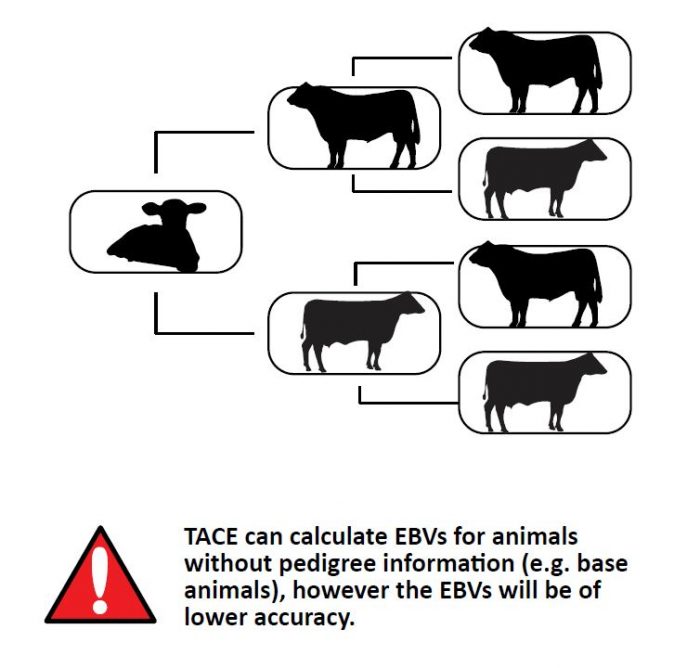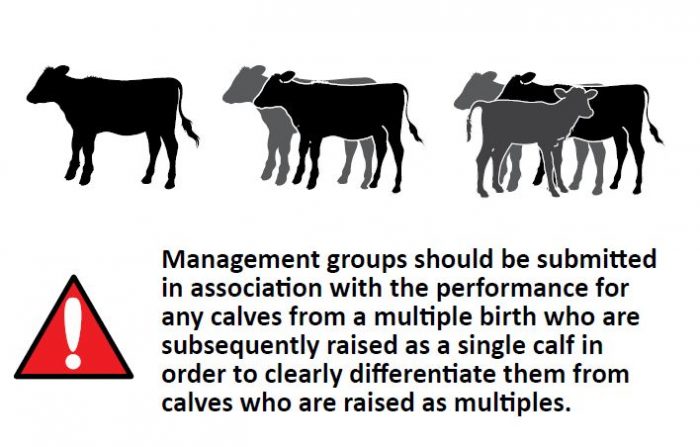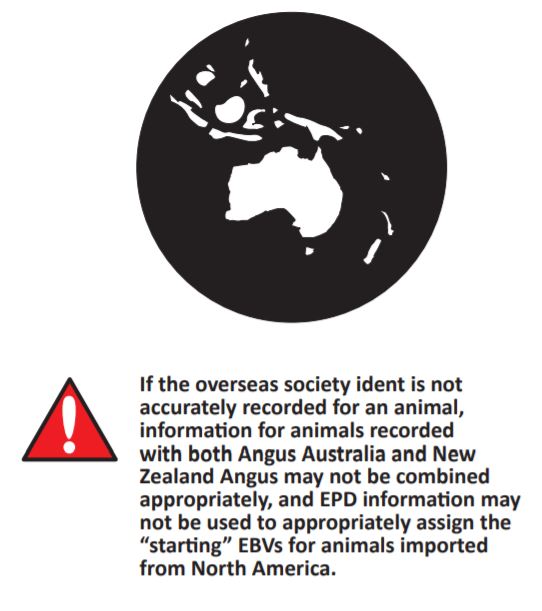Collecting Animal Registration Details
Important information for the calculation of TACE (TransTasman Angus Cattle Evaluation) EBVs is collected when animals are registered with Angus Australia.
- Pedigree: the sire and dam that is recorded for an animal has a large impact on the EBVs that are calculated for not only the animal, but its progeny and grand progeny. It is essential that the sire and dam specified for an animal is accurate. If there is any doubt as to who the correct sire and dam is, DNA parentage verification should be conducted

- Birth Date: birth date is used within the TACE analysis to adjust for differences in the age of the animals at the time of measurement, and to form contemporary groups. Animals should be checked daily during calving and the birth date of each calf recorded.
- Sex: sex is used to form contemporary groups within the TACE analysis, with only the performance of calves of the same sex (i.e. males, females) being directly compared together. Care should be taken to ensure that the sex recorded for each animal is accurate, and any errors that are identified immediately corrected.

- Birth Number: birth number is used to form contemporary groups within the TACE analysis, with only the performance of calves of the same birth number (i.e. singles, twins, triplets) being directly compared together. The birth number for all calves should be accurately recorded.

- Breed: breed is used within the TACE analysis to adjust for any differences in the performance of animals that can be attributed to heterosis. While breed is automatically assigned to the majority of
animals based on the breed information that is recorded on the Angus Australia database for their sire and dam, care should be taken to accurately record breed information when recording “base” (i.e. animals with an unknown parent) or “overseas” animals.

- Mating Type: mating type is used to form contemporary groups within TACE, with the performance of calves from natural and AI matings, and the performance from embryo transfer programs being analysed in separate contemporary groups. Care should be taken to ensure the mating type recorded for each animal is accurate.
- Recipient Dam Details: the breed and birth year of the recipient dam is used within TACE to account for any differences in the performance of embryo transfer calves that can be attributed to differences in the maternal contribution from the recipient. Care should be taken to ensure recipient dam information, particularly breed and birth year is accurately recorded.

- Country of Origin: the country of origin is used to assist with the calculation of “starting EBVs” for base or overseas animals. The country of origin should be accurately recorded for all base or overseas animals.
- Overseas Society Ident: the TACE analysis combines information recorded with both the Angus Australia and Angus New Zealand breed organisations, while also incorporating EPD information from a number of North American genetic evaluations. When recording overseas animals with Angus Australia, care should be taken to ensure the ident of the animal with the overseas breed organisation is recorded on the Angus Australia database.

Click here to print
Angus Australia acknowledges the funds provided by the Australian Government through the Meat & Livestock Australia Donor Company (MDC).
This resource was created as a result of a collaboration between Angus Australia and Meat & Livestock Australia Donor Company (MDC) (Project P.PSH.1063).






